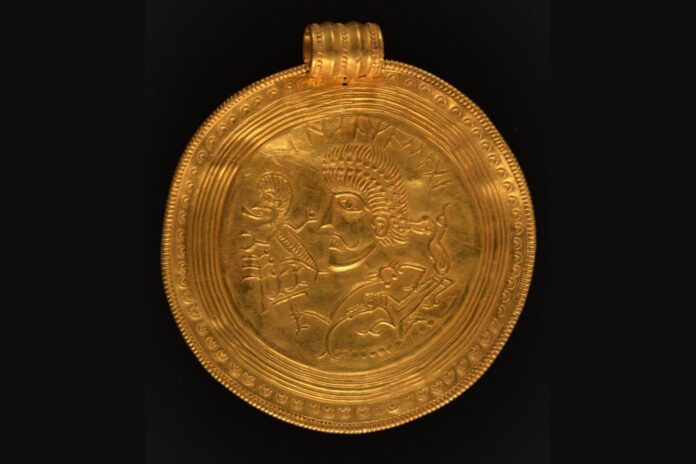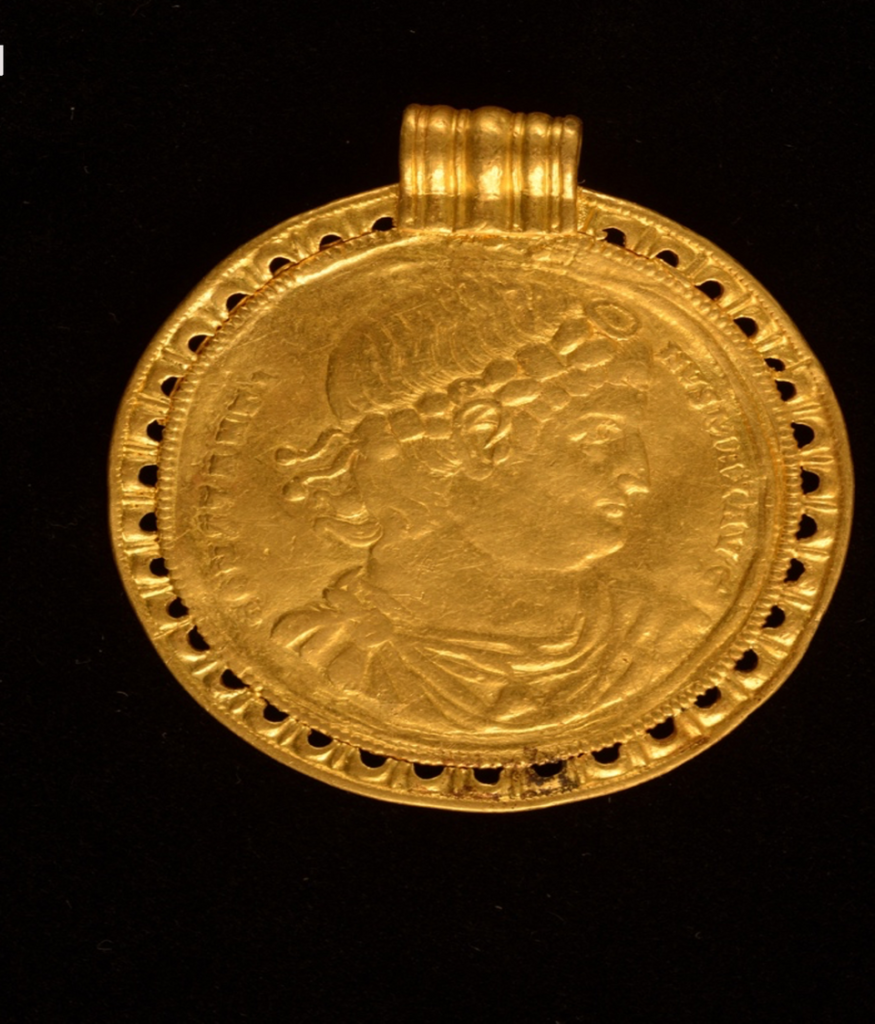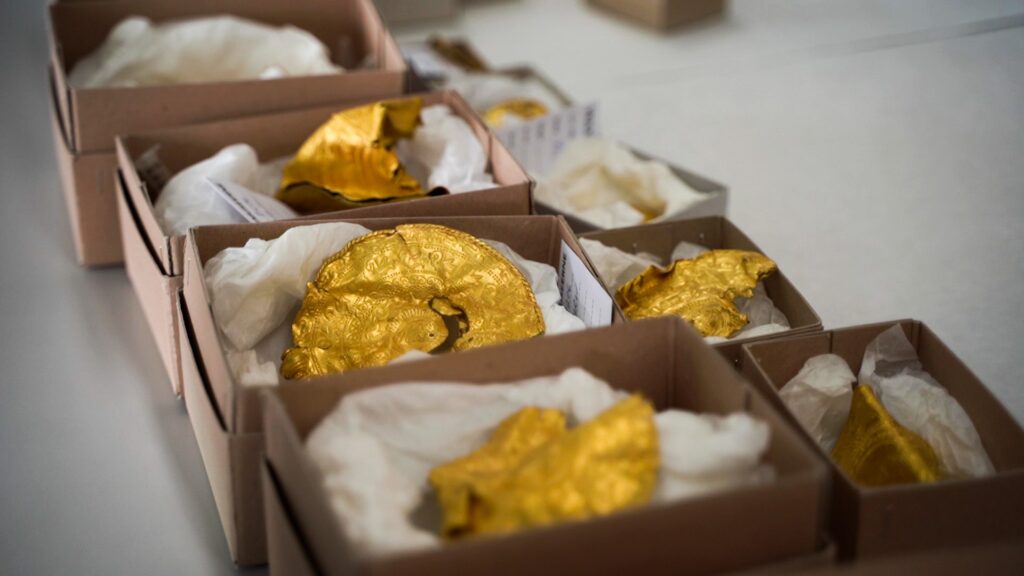
In the Danish countryside, with the help of a metal detector, a man discovered a cache of gold treasure 1,500 years old. The news was announced Sunday, according to Vejlemuseerne, a museum consortium in Vejle, Denmark. The gold treasure was found in Vindelev, a city about 150 miles from Copenhagen. It includes coins from the Roman Empire, as well as medallions known as bracteates, which were sewn onto clothing and worn as decoration.
These newly discovered objects are expected to be on display at Weilemusern in February 2022. Among these bracteates, there is one, with an inscription that translates as “High” – a possible indication of the ruler acting at the time when it was created, or the Norse god Odin.
This medallion, like all other found treasure items, dates from the 6th century AD. NS. These objects before the Vikings could have been buried against the background of the threat of environmental death.
In 536, a volcanic eruption occurred, forming a giant ash cloud that caused famine. Experts believe that in the midst of chaos, the inhabitants of modern Denmark have rejected their rulers and parted with gold objects depicting these leaders to hide medallions from enemies or as a means of appeasing angry gods.
Archaeologists in the state of Weilemuserne are now considering the possibility that Windelev was the center of a vast and powerful empire at the end of the Iron Age. Prior to the gold treasure find, “there was nothing that would lead us to predict that an unprecedented military leader or great man lived here, long before the rise of the Danish kingdom in the following centuries,” said Mads Ravn, director of research at Weilemusern, in an interview.

Ole Ginnerup Schitz was walking with an old classmate in Vindelev with a metal detector in his hand in December last year. A few hours later, the detector sounded and it found what is one of the greatest discoveries of gold in Danish history – a gold treasure from 1,500 years ago. But at that moment he did not realize it.
First, while digging, he found a small piece of curved metal. “It was full of wrecks and mud. I had no idea about this. The only thing I could think of was that it looked like the lid of a can of sour herring, ”he told Danish TV on Monday.
But then, continuing his excavations, he discovered about 20 precious objects of gold treasure, consisting of huge medallions called bracteates, the size of a saucer, as well as coins and jewelry from the Roman Empire. Most likely, they were worn as jewelry or clothing.
After this grandiose discovery, archaeologists carried out excavations. They now know that the treasure was buried under the longhouse about 1,500 years ago.
According to Vejlemuseerne, a museum consortium in Vejle, Denmark, the huge gold treasure weighs almost 1 kg. On Sunday, the museum unveiled the finds, calling them “one of the largest, richest and most beautiful gold treasures in Danish history.”

According to experts, treasury items before the Vikings are found in such techniques and combinations that have not previously been encountered when considering other similar examples. Thus, they are described as unique.
Some items of the found treasure have motives that may refer to the rulers of that time, while some symbols and inscriptions bear the spirit of Scandinavian mythology.
The most famous coin, on the other hand, comes from the Roman Empire and consists of the face of the Roman emperor Constantine the Great engraved on the coin. According to researchers, this golden fest demonstrates the close connection of the European continent with trade and war since the Iron Age.
They suggest that the treasure was buried after a global climate catastrophe. In 536, the volcano exploded and formed a massive ash cloud that caused unrest and famine for many years.
This catastrophe forced the inhabitants of today’s Denmark to abandon their old rulers and set aside a lot of gold to hide them from rivals or to satisfy the fierce gods in times of chaos. Experts and representatives of Denmark archeology are sure that Windelev was the center of a great empire at the end of the Iron Age.
As a reminder, the precious items from the Windel hoard will be exhibited in February 2022 at the Weylemuserne Museum, and then will be moved to the National Museum.
























